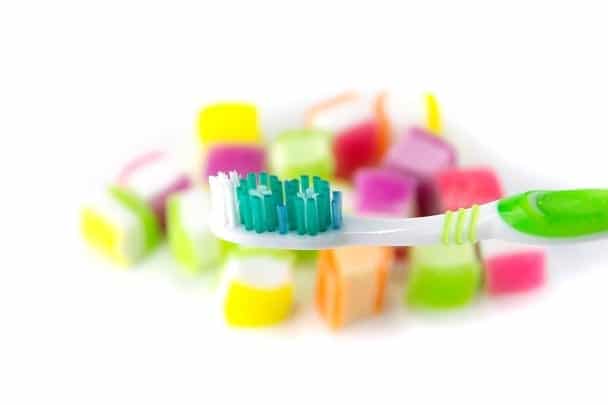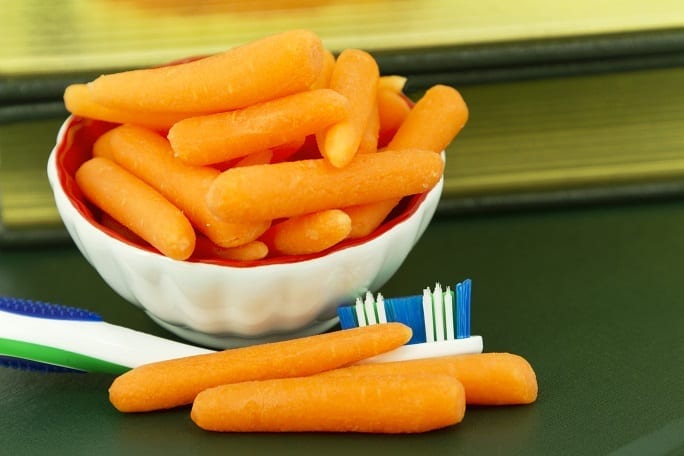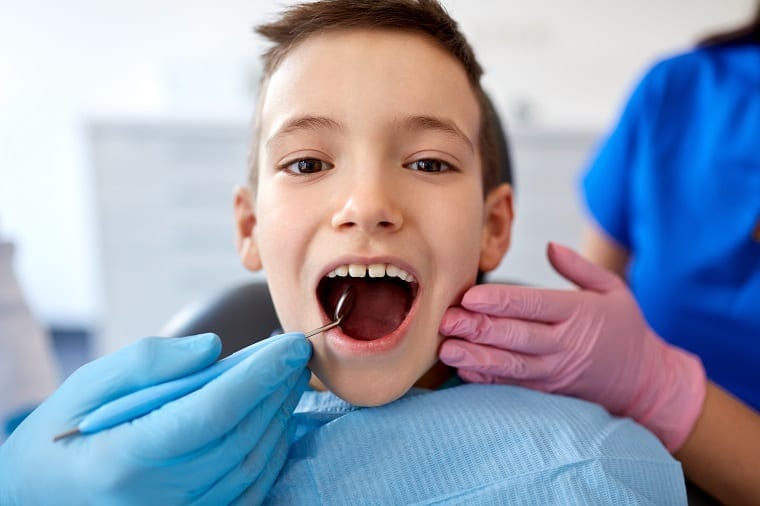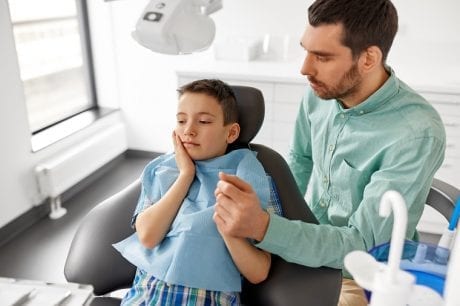Have you ever wondered why your child loves sweets so much? Adults and children have the same number of taste buds but a child’s tongue is a lot smaller. This means that the taste of sweets is magnified multiple times to children.
The Tooth Decay Process
Sugars are the food of the bacteria inside your child’s mouth. When bacteria overstayed in your child’s mouth, it will become a plaque. It is a thin film of bacteria that stays to the teeth above and below the gum line. Failure to remove plaque from your child’s teeth can lead to the buildup and harden into a tartar. The bacteria from the plaque and tartar use sugary foods to develop acids. These acids destroy the enamel, cause tooth decay, and gum disease. Tooth decay can also affect the inner layer of the child’s teeth called dentin. The deeper the decay goes, the worse the damage.
The good news is that tooth decay is preventable. You need to protect your child’s teeth because they help in your child’s speaking and eating activities. Untreated tooth decay can result to early tooth loss – which is neither good for your child’s health, comfort, or confidence.
How Children Acquire Tooth Decay

The bacteria inside your child’s mouth cause tooth decay. Tooth decay can happen when your child is exposed to food rich in carbohydrates (sugars and starches). The sugars and starches are left on the teeth. Bacteria that are present in your child’s mouth change the food and turn them into acids. The combination of bacteria, food, acid, and saliva form a plaque that sticks on your child’s teeth. Over time, the acids produced by the bacteria destroy the tooth enamel, causing cavities. Cavities are also called dental caries. These are the holes found on the teeth. Cavities can grow bigger and deeper. The upper four (4) front baby teeth are the most prone to tooth decay.
Early childhood caries can occur if infants sleep with a bottle of formula. The milk contains lactose sugar that feeds the bacteria. The flow of saliva is low when sleeping thus it does not protect the teeth from the damage.
Toddlers are typically exposed to sweet drinks and foods. These also contribute to the formation of tooth decay.
How to Know if Your Child Is Developing Tooth Decay
Early detection of tooth decay is important. It can help your dentist reverse the situation by providing appropriate treatment. But the initial stage of tooth decay is hardly seen by the naked eyes. There are common symptoms that will tell you that your child is already developing tooth decay. Note that symptoms may vary from child to child. There are times that only the dentist notices these, so make sure you bring your child to his pediatric dentist regularly.
- There are white spots forming on the teeth. The formation means that the enamel is starting to breakdown. The child may feel sensitivity in the teeth.
- A light brown color appearing on the tooth is a sign of an early cavity.
- Without giving attention, over time, the light brown color will turn into a darker shade then black. The cavity becomes deeper.
- Pain felt around the tooth or the affected area.
- Sensitivity to foods and drinks.
A complete history of your child’s dental health, an examination of his mouth, and dental X-rays will help in diagnosing whether the child has tooth decay or none. Regularly check your child’s teeth. When you notice something unusual, schedule an appointment with your dentist. Doing so can help you avoid major or extensive dental treatments, which can be very painful for your child.
How to Know if Your Child is at Risk
If your child is observed to have the following factors, he is at risk of having tooth decay:
- High levels of bacteria
- Poor diet – normally high is sweets, acids, and carbohydrates
- Poor oral hygiene
- Low fluoride intake
- Reduced salivary flow
How to Avoid Tooth Decay

Your child has to know how to clean his teeth. Start off by giving him a toothbrush. Introduce the toothbrush as a toy that he needs to play during bath time. Amount of fluoridated toothpaste will vary on the age of your child. Encourage your child to clean his teeth before going to bed. This will be difficult for your child, sometimes, he will forget doing so. You have to assist him.
While saliva helps in repairing the damages caused by bacteria, if the child keeps on eating sugary foods and drinking acidic liquids like sodas and juices, bacteria are continuously being fed.
Bacteria are always present in your child’s mouth, which means that he is at risk of having tooth decay. Some of the reasons why children are prone to having tooth decay are diet that is high in sugars and starches, lack of fluoride, poor oral hygiene, less saliva flow, etc. Here are some useful tips on how your child can prevent tooth decay:
- Create a good eating habit.
- Drink lots of water and avoid drinking juices and other sugary drinks.
- Observe regular cleaning or brushing of the mouth and teeth. Brushing should take at least two (2) minutes.
- Regular dental check-ups are also encouraged from age two (2) and above.
How to Treat Your Child’s Tooth Decay
A child’s tooth decay treatment is different from an adult’s. The treatment usually depends on the symptoms, age, condition, and general health.
Children’s most cases involve removing the decayed part of the tooth and replacing it with a filling. Fillings are used to place in teeth to repair the damage caused by tooth decay. They are also known as restorations. There are two (2) types of fillings:
- Direct restorations require one (1) visit to place a filling directly into a prepared hole. These are made out of silver, fine glass powders, acrylic acids, or resin and are tooth-colored.
- Indirect restorations require more than one (1) visit. They involve inlays, onlays, veneers, crowns, and bridges. These are created with gold, base metal alloys, ceramics, or composites. These materials look like the enamel.
Consult your child’s pediatric dentist as to what is appropriate for your child’s condition. Filling and full crown are needed to prevent the bacteria from spreading. We do not want our child to experience extensive damage. Tooth decay may have to be extracted if it is severe enough in the primary teeth.
How to Help Your Child Prevent Tooth Decay
According to the National Institute of Dental and Craniofacial Research, 42 percent of children ages two (2) to 11 develop cavity in their primary teeth making tooth decay a concern for the parents. Here are some simple ways to help your child prevent tooth decay:
- As soon as the first tooth appears, start brushing. Include the tongue and gums. It is recommended to brush twice a day using fluoride toothpaste. Guide the child at first and eventually let him brush on his own. Make him spit out after brushing. Fluoride prevents mineral loss in the enamel and weakens the ability of the bacteria to produce acids. Other sources of fluoride include drinking water, fluoride gel, prescribed fluoride tablets, and mouth rinse. Monitor your child’s fluoride intake as excessive amounts can cause fluorosis, a condition marked by mottling of the teeth, and if severe, calcification of the ligaments.
- If your child is younger than three (3) years old, use a small amount of toothpaste in the size of a rice grain. When he reaches three (3) years old, your child can use pea-sized amount of toothpaste. Brushing can be fun. Choose toothbrush characters that your child would love.
- After the age of two (2), it is recommended to floss your child’s teeth.
- A well-balanced diet will help prevent tooth decay. Limit snacks that are high in sugars.
- Do not share utensils with your child to avoid transfer of bacteria from your mouth to his. Do not clean pacifier with your saliva.
- Do not fill your child’s bottle with formula or juice during bedtime. They can contribute to the formation of tooth decay and create an ideal breeding environment for bacteria. According to the American Academy of Pediatric Dentistry (AAPD), this is the common cause of toddler tooth decay.
- There are also dental sealants that can used to protect your child’s teeth. Dental sealants are good alternative to prevent tooth decay and cavity. These are thin, plastic coatings that can be applied to the teeth used for chewing. Chewing surfaces are uneven and have small pits where food and bacteria can stay and multiply. Sealants can cover the spaces.
- Make sure to visit the dentist for routine dental cleanings and exams. Visits can be done every six (6) months. The dentist can remove dental plaques as early as possible and detect any areas for early tooth decay. Ask the dentist on how to thoroughly clean the teeth.
- Do not let your child suck so many candies for prolonged periods.
- Make sure that all members of the family practice good dental habits to minimize risk of transferring bacteria to your child.
As parents or guardians, you are responsible in helping your child have a good and healthy set of adult teeth. Make all of these become part of your child’s habits that he will carry throughout his life for him to reap the many advantages of good dental health.
Pain, Pain Go Away
How should you take care for your child who is already experiencing pain and swelling because of decayed tooth? Here are some techniques or remedies that you can do even at home:
- Give your child acetaminophen or ibuprofen to reduce pain. Consult your dentist on the medicines or pain relievers that your child will take.
- Prepare ice or a cold pack and put it on your child’s cheek where the hurting tooth is. Leave the ice or cold pack for ten (10) to 15 minutes. Do not forget to place a thin cloth in between the ice and your child’s cheek.
When to Seek Help

Observe and watch your child closely. Let your dentist know if immediate medical care is needed. The signs of infection include increased pain, swelling, and redness of the gums, visible pus draining in the gum around a tooth, fever, and toothache.
Getting the Most Out of Your Child’s Dental Visits
Take your child to the dentist on a regular basis. We do not often notice that going to the dentist frequently will help us save money in the long run. In visiting your child’s dentist, here are some important notes.
- You should be able to know the purpose of your visit and what you want to happen.
- It will be helpful if you have the list of questions that you want to be answered.
- Take note on the information that you will get during the visit – new diagnosis, new medicines, treatments and tests needed, etc. Do not forget to write down instructions that the dentist gives for the child.
- You should not stop on taking down what the dentist says. Ask why there is a need for a new medicine, how the medicine will help your child, and what the side effects are.
- If you are not comfortable with treatments because you see that your child is not ready yet for procedures, do not hesitate to ask your dentist on other ways that your child can be treated.
- Know the results of the recommended test or procedure.
- In the instance that your child will not take the prescribed medicines, test, or procedure, know the consequences.
- Follow up appointments are important. Plot on your calendar date, time, and purpose for the visit.
- Make sure to have your dentist’s contact information in case you need to ask questions or advice. Let the dentist know that you may contact him even after office hours as you see necessary.
- Keep an eye on how often your child eats and what foods he eats.
Healthy teeth are a crucial component of a healthy body. Helping your child prevent tooth decay can be one of the greatest gifts you can give your little loved one that will benefit him for the rest of his life.
Thantakit International Dental Center is your partner in ensuring your child’s good dental health. As Thailand’s longest established dental center with 74 years of topnotch dental care experience, Thantakit is recognized as a destination for world-class dentistry, catering to clients from various international locations, many of which are from Australia.
We care for you and your child’s dental health. Contact us today and get a FREE dental consultation.













